In this article
Understanding Stop Motion Animation
Do you know how the first Disney movies were made? Each frame was hand-drawn, placed in a sequence of twenty-four frames per second, and then recorded flipping over at a steady rate. This old-school frame-by-frame cartoon creation method paved the way for an entirely new movement in the world of visual arts. Instead of drawing frames by hand, creators can now take high-quality photos for each frame in a sequence, leading to stunning visuals.
This recording technique is called stop motion animation, and today, we will explain everything you need to know about it. The best starting point is the definition.
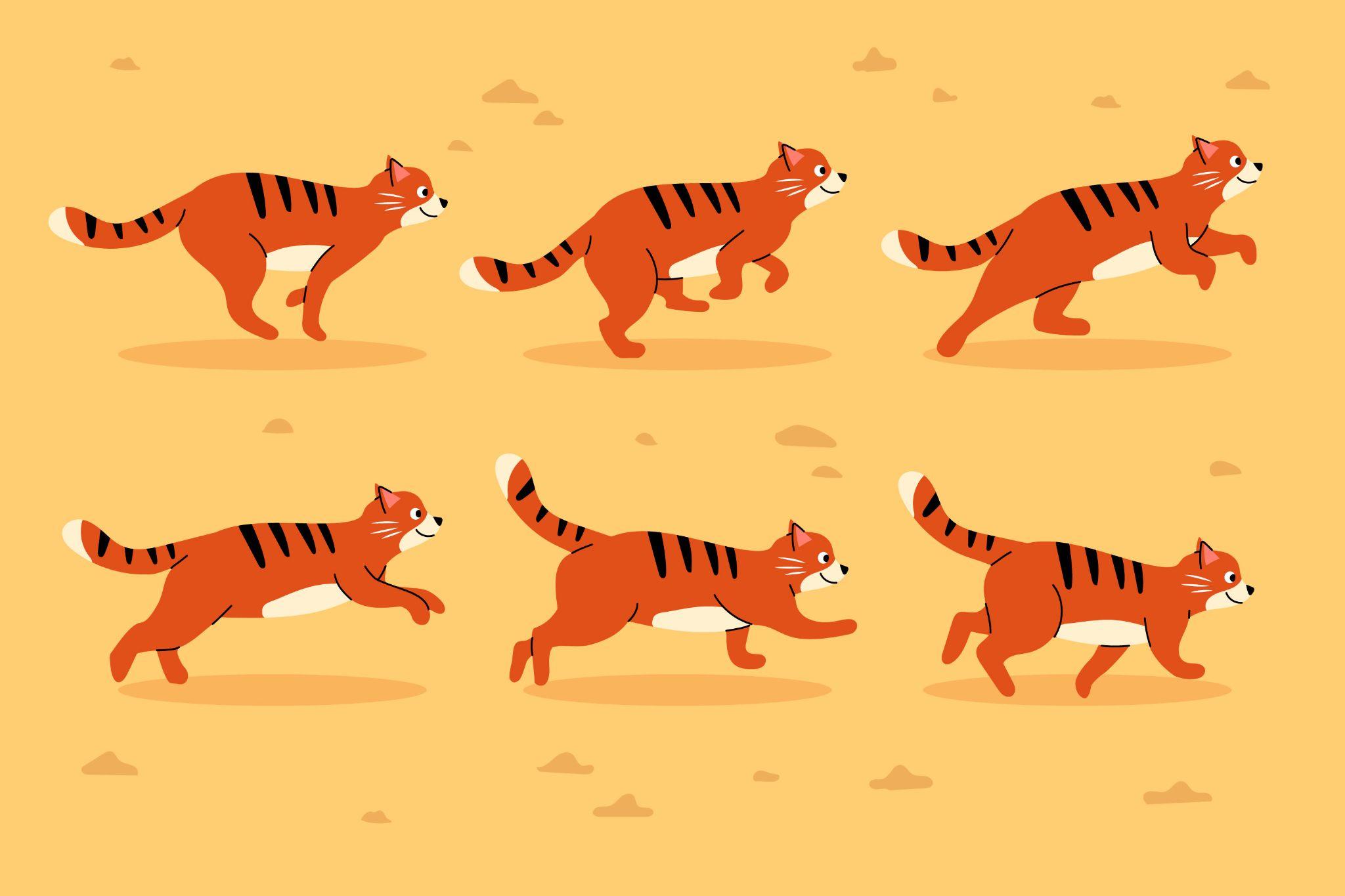
Stop motion animation is a specific video creation technique in which the subject is something man-made. For each frame in a sequence, the subject is physically moved and altered to create the illusion of movement and create a story. It usually involves a team of people who create a small set, use objects such as dolls, puppets, or clay figures as characters, and carefully change their position and features for every frame.
What are the Visual Characteristics of Stop Motion Animation?
Let's see a more detailed feature description.
| Feature | Description |
| Textured Surfaces | Materials like clay, fabric, or wood add realism |
| Jerky Motion | Due to frame-by-frame animation |
| Physical Depth | True 3D space with parallax |
| Natural Shadows | Real lighting adds visual realism |
| Stylized Effects | Fire/smoke is often made from cotton or paper |
| Visible Artifacts | Puppet seams or face swaps may be visible |
| Miniature Worlds | Hand-built sets and props |
| Low Frame Rate | Often 12 fps for efficiency and style |
Common Types of Stop Motion Animation
There are countless creative approaches to stop motion animation, but we have identified the four most common types.
Claymation
This form of stop motion animation uses malleable clay figures and, more often than not, the entire set is built from clay. Each structure or character is created by adding clay around a set of wires that hold everything in place. It is a popular choice because you can create a controlled and easily manipulated environment, which speeds up the process.
Puppet Animation
Puppets are a challenge, but here, you get to explore different materials and textures to complement your story. The project usually involves articulated puppets where you can control the position of their extremities and facial expressions. Some puppet animations feature choreographed, recorded sequences, but most of it is done frame-by-frame.
Object Animation
Animating objects opens the door to a world of possibilities, which can be hilarious more often than not. This type of stop motion animation is very common and not that challenging. Parents create short stop-motion clips of their children's toys having fun or an entire lunch being prepared by itself with ingredients seemingly hopping into the boiling water.
Cut-out Animation
This is another fun type of stop motion animation where you use paper cutouts to create the characters and setting. This is another fun activity that parents and kids share, but just like object animation, talented creators can use this technique to create very exciting and intriguing works of art. However, cut-out stop motion might be the best version for practice.
Top 5 Movies with Stop Motion Animation
There are so many full-length movies that feature this technique, but we have prepared a list of the top five timeless stop motion animation movies. Check it out.
Coraline (2009)
Director: Henry Selick
This movie opened a whole new dimension to stop motion. Usually, such movies are geared towards a younger audience, but this visually stunning dark fantasy masterpiece had something for everyone. By pushing the boundaries of 3D stop motion with intricate sets, expressive puppets, and a haunting, emotionally rich story, this movie was a real treat.
The Nightmare Before Christmas (1993)
Director: Henry Selick (produced by Tim Burton)
This blockbuster has Tim Burton written all over it. It is actually revered as a genre-defining classic, blending Halloween and Christmas themes with some of the most memorable music you've ever heard, a very stylized design that gives off that spooky Tim Burton aesthetic, and so many more fun things to see and experience. That's why it's a timeless classic.
Wallace & Gromit: The Curse of the Were-Rabbit (2005)
Directors: Nick Park & Steve Box
Here we have a fun, family movie that actually won an Academy Award for Best Animated Feature in 2006. Apart from stunning stop motion animation, which is featured in all movies on this list, this charming and witty British comedy features beloved clay characters who go on an exciting adventure. This movie features some of the best craftsmanship ever recorded.
Kubo and the Two Strings (2016)
Director: Travis Knight
This movie represents the evolution of stop motion animation because it combines it with modern technologies. Kubo is a samurai-inspired, visually breathtaking epic, and here, the creators decided to combine stop motion with CGI enhancements. The result is not the stop motion effect you are used to, offering something new to audiences worldwide.
Fantastic Mr. Fox (2009)
Director: Wes Anderson
Wes Anderson has become famous for his particular aesthetic, with perfect balance and symmetry in every scene. His venture into stop motion animation is a testament to how creative and unique a movie can be if you have a very talented director at the helm. The unique, handmade aesthetic and quirky storytelling complement each other brilliantly.
When and Where to Use Stop Motion Animation
This section will cover the story genres best suited for stop motion animation, some cool creative techniques that pair well with this form of animation, and a couple of pro tips.
Genre-Specific Applications for Stop Motion Animation
Combine Stop Motion Animation with These Creative Techniques
The Two Most Important Artistic Considerations Concerning Stop Motion Animation
How to Create Your Own Stop Motion Animation?
The road to creating your first stop motion animation clip is long, but you will have a lot of fun along the way.
1. Gather Your Equipment and Pick a Shooting Location
There are a lot of items that you need, so here are the essentials.
- Camera: You can use your smartphone camera for your first clip.
- Tripod: The camera needs to be stabilized and positioned perfectly.
- Lighting: You will need several light sources for different scenes.
- Set: It can be any closed space, like a garage or an attic, with zero sunlight.
- Backdrop: You will need to create the scene from scratch.
Of course, you can choose the overall aesthetic for your project depending on the materials you decide to use (clay, puppets, etc.).
2. Plan Your Story from Start to Finish
Start by writing a detailed script for the story and then creating a detailed storyboard, which will serve as a template for each scene. Then, break the story into scenes and shots and create a timeline for when to record each scene based on the time required to capture one frame. It's complicated, but planning is half the work in stop motion.
3. Prepare for Shooting the First Frame
After you have your storyboard, use it to set up the first scene, set the camera and tripod, and start capturing frames. Make sure that multiple people are overseeing the project, and pay attention to tiny details whenever you change the scene for the next frame. Frame your shot, light the scene, mark the positions of the most important subjects, and snap!
4. Import Your Images into Filmmaking Software
For this type of task, there is no better tool than Filmora. It features one of the easiest video editing timelines, allowing you to have full control over each frame. With powerful editing features and AI tools, Filmora will help you make the perfect stop motion animation.
To use Filmora, go to the official website and download the installation file on your Windows or Mac device. After the installation is complete, open Filmora and create a new project. Then, follow the steps below.
Click on Import and add several photos to the project.
Drag the images to the timeline in the correct order.
Hover over the endpoint of each clip and trim it so that it is only a fraction of a second. Then move the clips and bring them together.
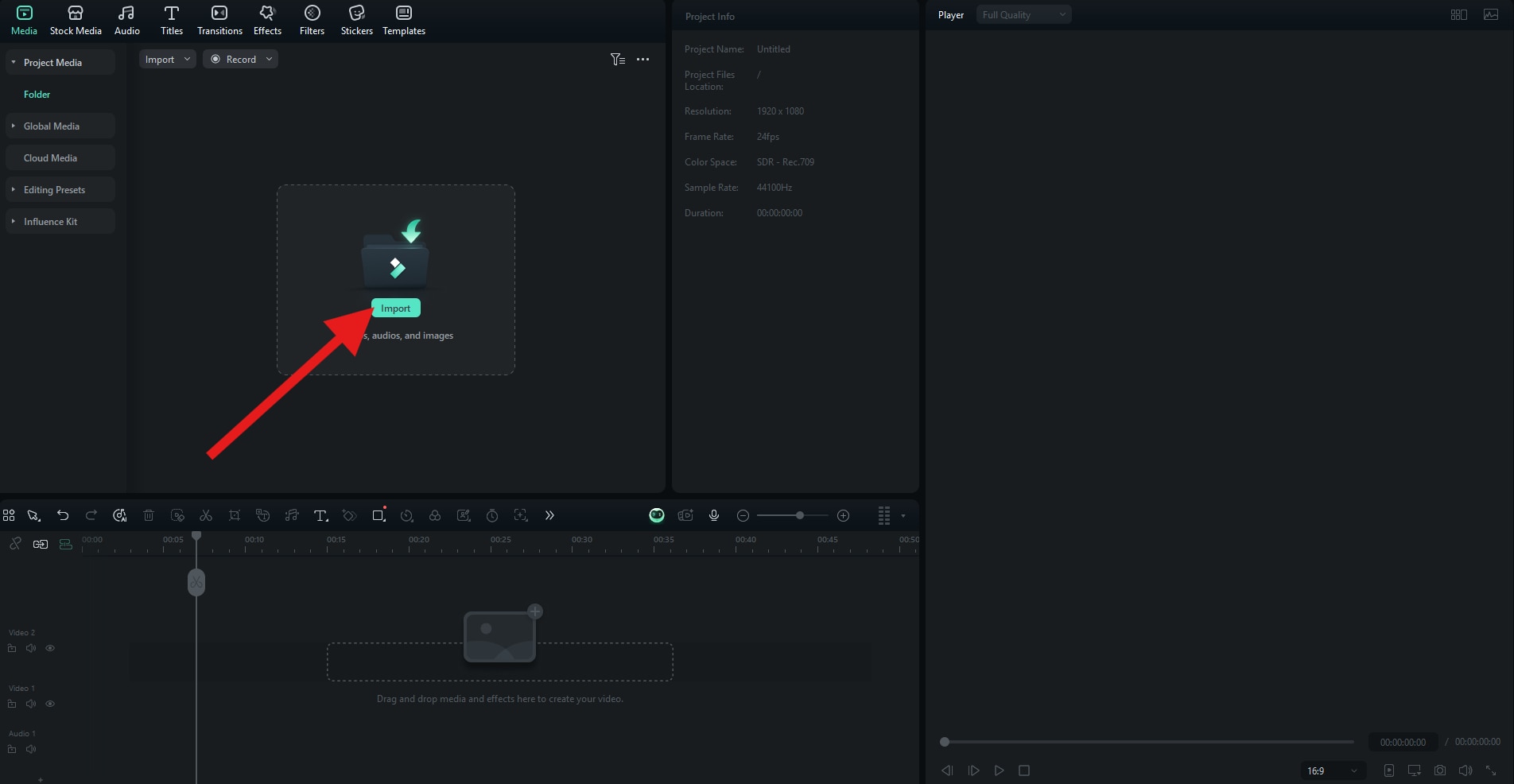
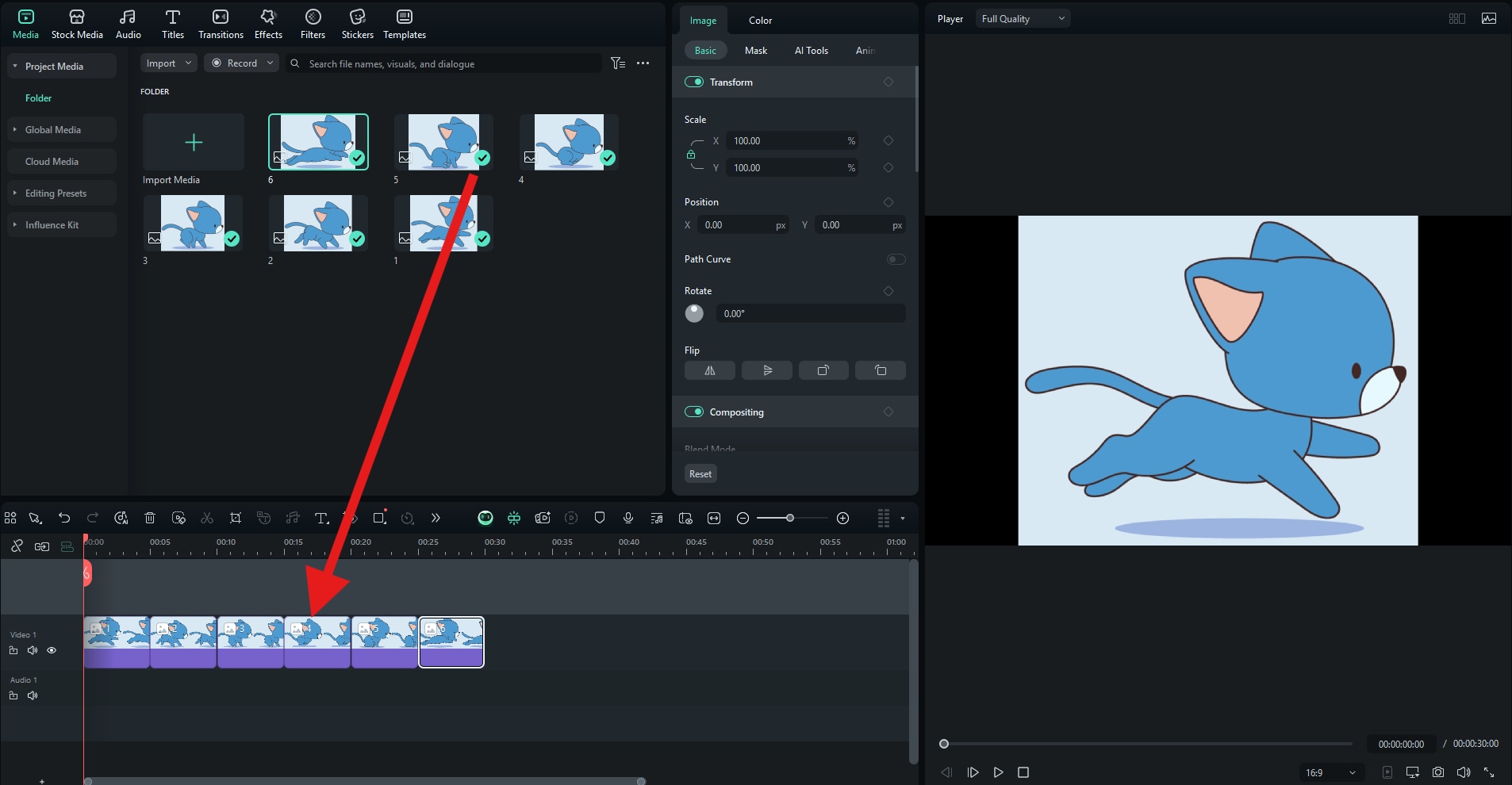
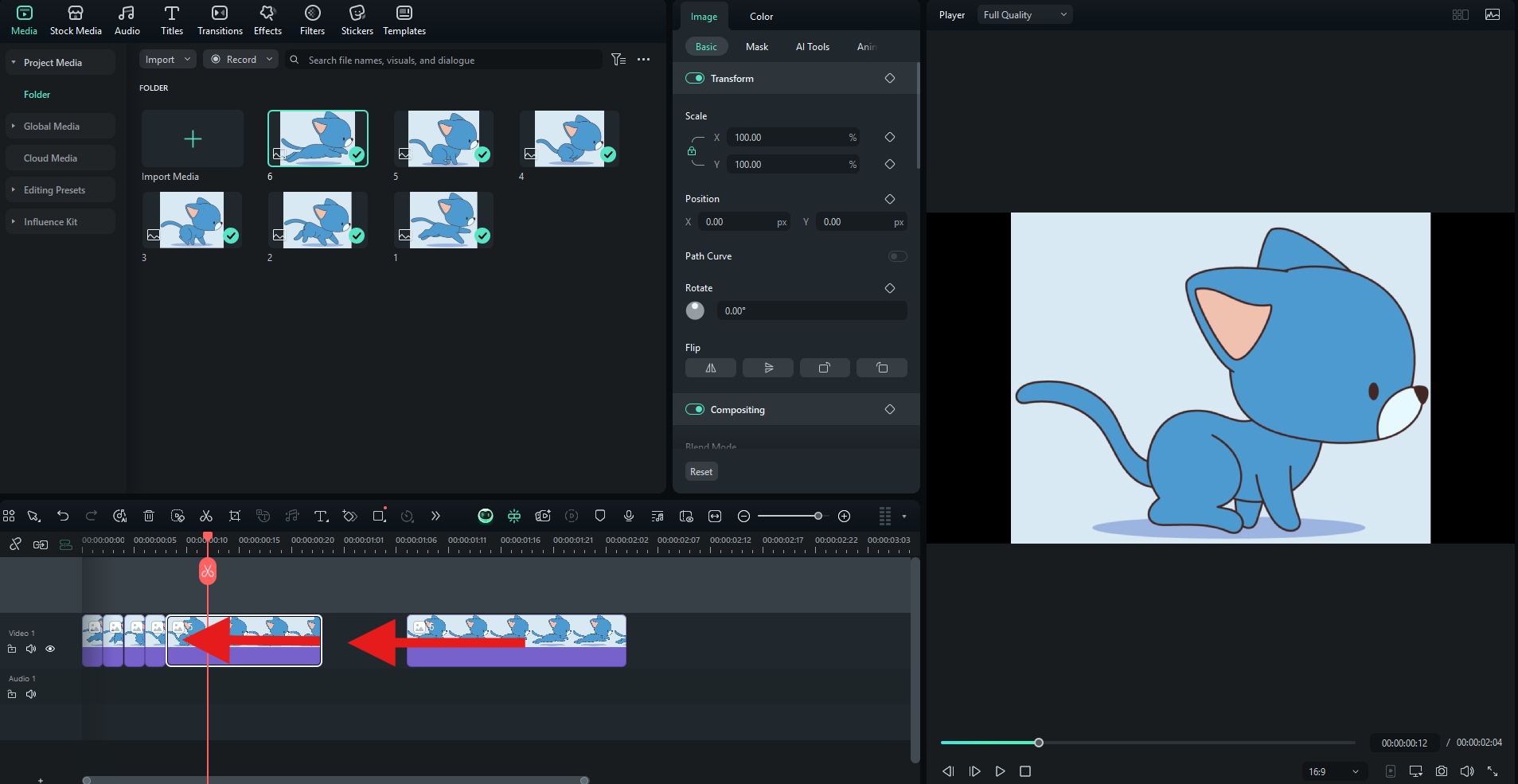
Take a look at the awesome animation that we were able to create.
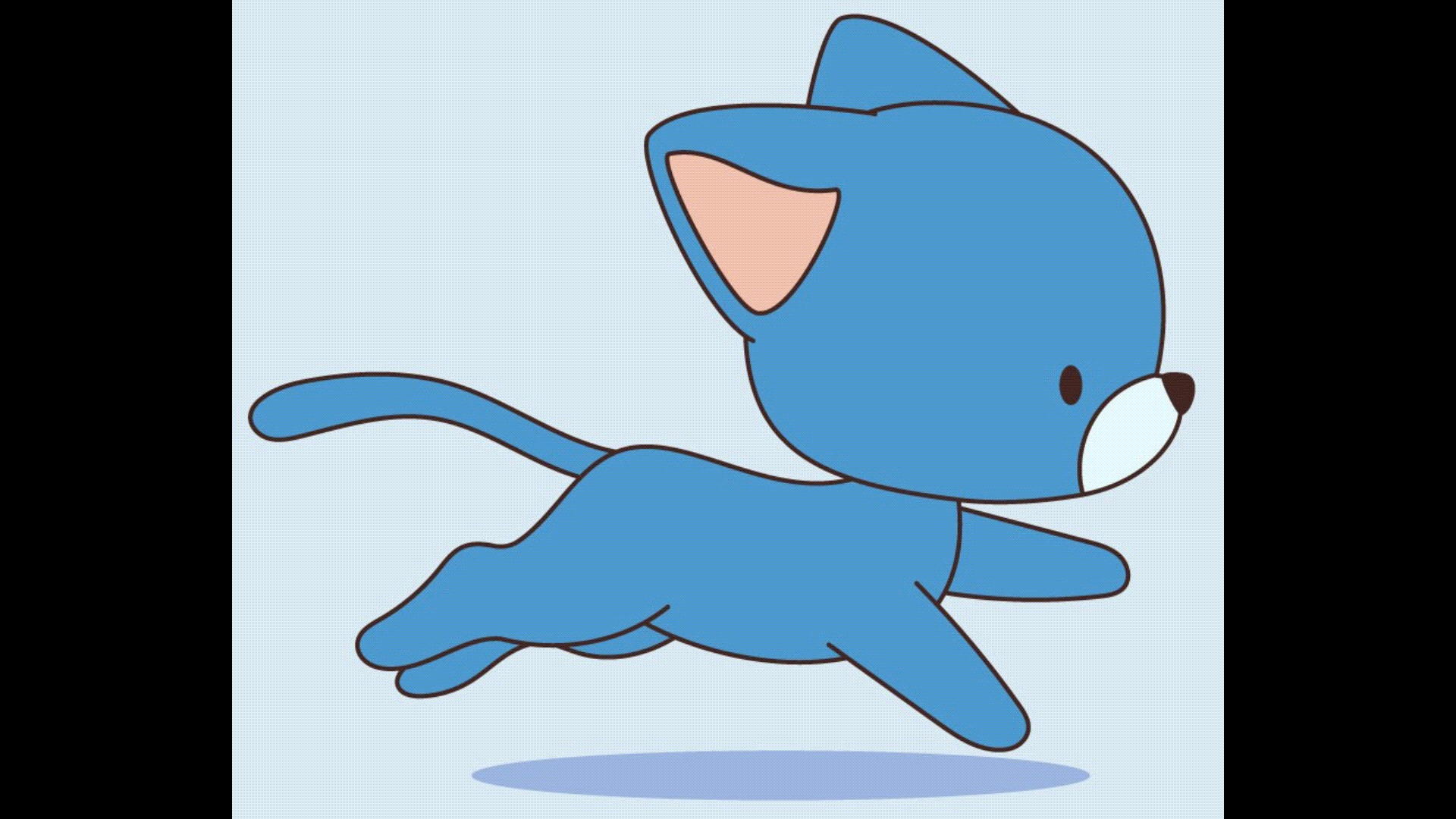
Troubleshooting The Most Common Issues with Stop Motion Animation
In a particular frame during a stop motion animation sequence, you notice that there are some objects out of place, and the scene is not working.
Restart the recording process carefully.
The stop-motion animation project is taking longer than anticipated. You are losing focus and even considering dropping the project altogether.
Plan each shooting day down to the last minute.
This happens when elements in the scene (like the camera, background, or characters) shift slightly between frames unintentionally, causing a jumpy or unstable animation.
Stabilize your camera, anchor your set and background, minimize vibrations, and use onion skinning or reference overlays.



